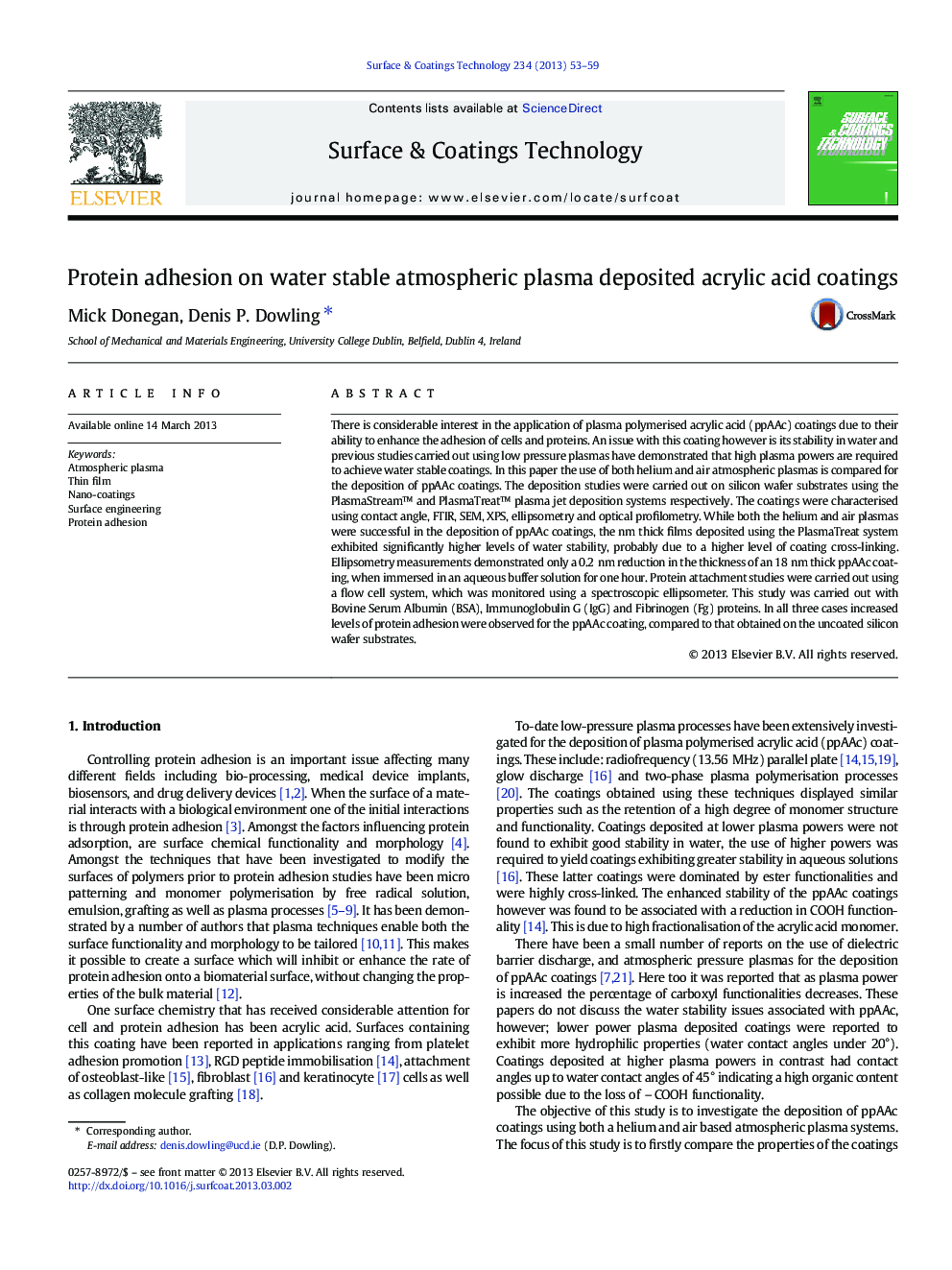| Article ID | Journal | Published Year | Pages | File Type |
|---|---|---|---|---|
| 8029317 | Surface and Coatings Technology | 2013 | 7 Pages |
Abstract
There is considerable interest in the application of plasma polymerised acrylic acid (ppAAc) coatings due to their ability to enhance the adhesion of cells and proteins. An issue with this coating however is its stability in water and previous studies carried out using low pressure plasmas have demonstrated that high plasma powers are required to achieve water stable coatings. In this paper the use of both helium and air atmospheric plasmas is compared for the deposition of ppAAc coatings. The deposition studies were carried out on silicon wafer substrates using the PlasmaStream⢠and PlasmaTreat⢠plasma jet deposition systems respectively. The coatings were characterised using contact angle, FTIR, SEM, XPS, ellipsometry and optical profilometry. While both the helium and air plasmas were successful in the deposition of ppAAc coatings, the nm thick films deposited using the PlasmaTreat system exhibited significantly higher levels of water stability, probably due to a higher level of coating cross-linking. Ellipsometry measurements demonstrated only a 0.2 nm reduction in the thickness of an 18 nm thick ppAAc coating, when immersed in an aqueous buffer solution for one hour. Protein attachment studies were carried out using a flow cell system, which was monitored using a spectroscopic ellipsometer. This study was carried out with Bovine Serum Albumin (BSA), Immunoglobulin G (IgG) and Fibrinogen (Fg) proteins. In all three cases increased levels of protein adhesion were observed for the ppAAc coating, compared to that obtained on the uncoated silicon wafer substrates.
Related Topics
Physical Sciences and Engineering
Materials Science
Nanotechnology
Authors
Mick Donegan, Denis P. Dowling,
